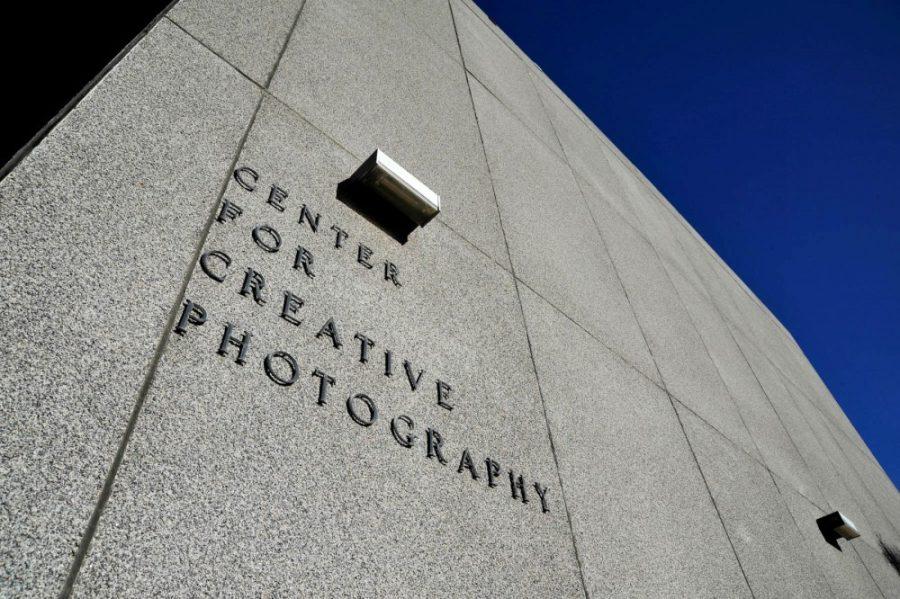Photography serves as a way to analyze, empathize with and comprehend the progression of humanity throughout the ages, and thankfully the UA possesses one of the largest archives for photography in the country. The Center for Creative Photography was developed by President Emeritus of the UA, Dr. John P. Schaefer and one of America’s most beloved photographers, Ansel Adams.
How the UA got a hold of Ansel Adams’ legacy and developed one of the largest, most complete archives of 20th century American photography all began with Schaefer’s passion for the art form.
“I was very active in collecting books at the university, science books especially, as my background is in science,” Schaefer said. “I quickly came to realize that although we had a good collection of first editions of science key works, there was no way we were ever going to catch up with Harvard or Yale who had a 300-year head start—no one was collecting photography.”
RELATED: LaVerne Harrell Clark photo collection at UA Poetry Center captures emotions of over 1,000 poets
Schaefer said that he used photography as an outlet to channel his creativity since he was young and continued when he got into the administration.
In 1974 during his presidency, Schaefer met Ansel Adams at a 350-print photography show.
“I was very interested in collecting photography in a serious kind of way,” Schaefer said. “During the opening of the show, which was a very big event, I asked [Ansel Adams] if he would like to give his archives to the University of Arizona.”
It occurred to Schaefer that photographs had become the literature of the time and that’s what drew him to Adams’ work.
Schaefer said he thinks a big part of this cultural affinity for photos came from a society influenced by the constant stream of photos and videos of the Vietnam War.
“Ansel Adams was recognized, worldwide, as one of the finest practitioners of photography as an art,” Schaefer said. “I asked him about his archives, he was rather surprised and said ‘Berkeley thinks they’re going to get my archives, but they’re just going to bury it in the basement of the Bancroft Library. If you’d like to do something on a grander scale [with photography], I’d like to talk to you.’”
That December, Schaefer went up to his home and he and Adams talked about photography, further developing Schaefer’s concept for the CCP.
It turned out there were a lot of other photographers in Adams’ age bracket who didn’t know what to do with their photography. Schaefer reached out to them, as well.
“No other universities were really collecting photography, or looking at it as an art form or social document,” Schaefer said.
Schaefer’s ambitious concept became realized and the CCP opened in 1975.
Ansel Adams is known for his distinctive black-and-white photography, and Schaefer said he came to understand why he preferred this aesthetic medium.
“[Adams] did a lot of color photography,” Schaefer said. “He didn’t like it, primarily because you couldn’t reproduce colors very well in the ‘50s and ‘60s. Color just didn’t resonate with him.”
RELATED: School of Art exhibition translates Snapchat streaks to the physical realm
Schaefer said that Adams was a fabulous technician, but he was a terrible writer in terms of explaining what to do.
“One job I took on, in the late 1980s after his death, was to rewrite his technical books in two volumes,” he said. “I refer to it as translating them into English.”
Adams’ collection preserves the adventurous life that the photographer lived, but Schaefer vividly remembers Adams from a more personal perspective.
“He was a delightful man in every aspect of his personality and relationship with people,” said Schaefer. “I became a trustee of his estate and still work today publishing calendars that I put out every year.”
The CCP remains an important staple of the UA, and Schaefer said he couldn’t be more proud that the institution was a part of his legacy.
“I think back on my years as president [of the UA] and this is one of the most significant achievements we had. It’s something that I am proud of and Arizona should be proud of.”
Follow Maryam Sobhani on Twitter









